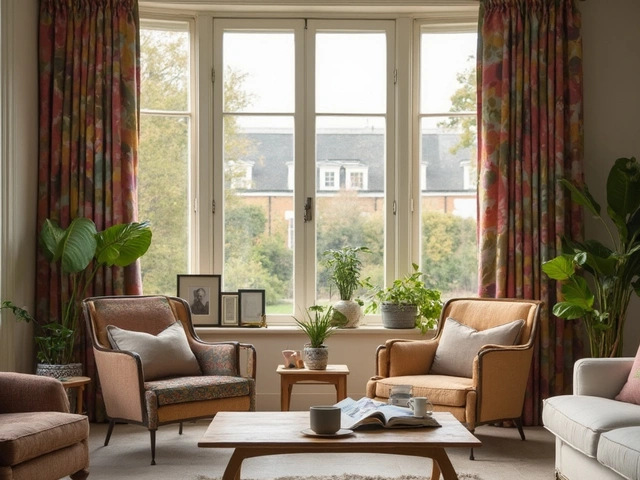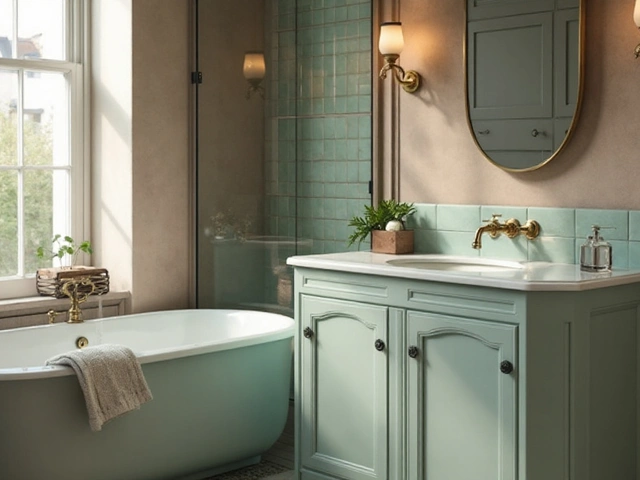Clever Storage Hacks for Small Spaces
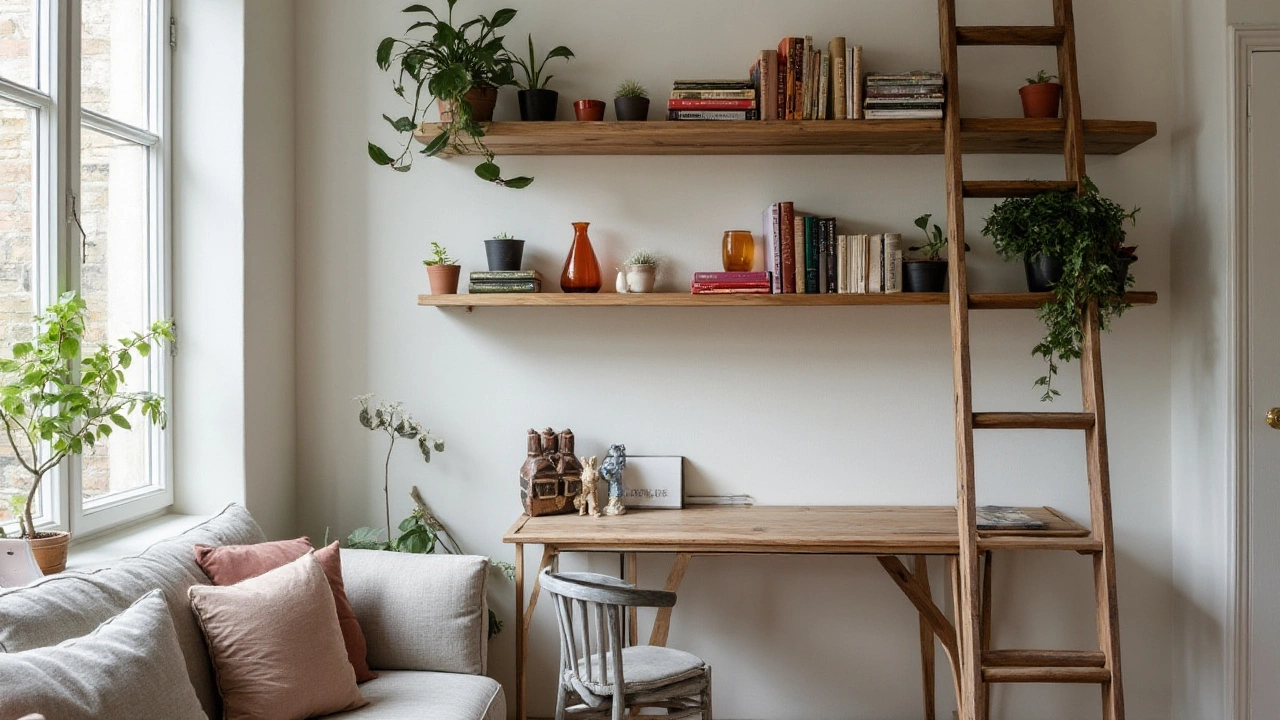
Living in a compact space poses unique challenges, especially when it comes to storage. However, with a little creativity and planning, you can make the most out of every inch. It’s not about the size of your storage, but how you use it.
Think of your walls as allies; they can be decked out with shelves or hooks to hold your belongings. Multi-functional furniture is also a game-changer, like ottomans that can hide blankets or beds with built-in drawers. If your closets are bursting, don't despair. There are ingenious ways to keep them tidy and efficient.
Let's dive into some practical tips and tricks that will help you reclaim your space and restore order to your living area. Whether you’re looking to stow away seasonal clothes or find a spot for your growing book collection, you've got options. It’s time to embrace your inner organizer and transform your home into a clutter-free haven.
- Understanding the Space You Have
- Maximizing Vertical Storage
- Multi-Functional Furniture
- Creative Closet Solutions
- Under-Bed Storage Options
- Decluttering and Organizing Tips
Understanding the Space You Have
Before you dive into the world of storage solutions, it's crucial to start by understanding the space you’re working with. This involves not only taking a close look at the physical dimensions of your room but also considering how you use it daily. You need to be a bit like a detective, examining every nook and cranny for hidden potential. Walk through your space and take note of areas that are underutilized. Corners, alcoves, and even wall heights are often overlooked but can be prime spots for small space storage.
It might be useful to visualize your space as a series of zones that have specific functions. By breaking it down, you can better determine what needs to stay accessible and what can be tucked away. For instance, in a living room, the area near your seating can be designated for comfort items like cushions and throws, while upper shelves may hold less frequently used books or decor items. This zoning technique not only helps with organizing but also makes your space feel more intimate and functional. Remember, your living area isn’t just a box but a series of opportunities waiting to be maximized.
When looking at storage options, the real trick lies in choosing multi-purpose solutions that fit seamlessly into your lifestyle. Consider how vertical space can be leveraged—it's often underappreciated yet holds the potential to double your storage capacity. In older buildings especially, ceiling heights can offer significant storage benefits if utilized correctly. According to a piece in The New York Times, using vertical storage is key in urban apartments where horizontal space is limited.
“In a city where every square foot counts, going up can be the smartest thing you do.”This philosophy isn't just for urban dwellers but can be applied universally to transform small areas into spacious retreats.
Moreover, take some time to declutter as you assess your storage needs. A clean environment not only frees up space but also allows you to make thoughtful decisions about what stays. Research has shown that decluttering not only reduces stress but also boosts productivity. A study conducted by Princeton University concluded that the clutter can actually make it hard to focus on tasks and process information. If an item doesn't serve a purpose or bring joy, it might be time to let it go. Embrace the minimalist mindset, which can often bring the dual benefit of clearer spaces and a clearer mind, making your home a more inviting sanctuary.
Sometimes it's helpful to draw out your space and play around with potential arrangements. Online tools or good old-fashioned graph paper can aid in mapping your room and experimenting with furniture layouts. This preparatory step can save time and resources when you start shopping for storage solutions. But remember, the goal is not to fill every inch; it's about creating a harmonious balance between living and storing. By understanding your limited space deeply, you can avoid the pitfalls of overcrowding while making smart choices that enhance comfort and efficiency in your home. Taking this introspective look can make a significant difference as you pursue ways to store your life away neatly and stylishly.
Maximizing Vertical Storage
In the quest to unlock more room in your home, thinking vertically can be an absolute game changer. Traditional storage solutions like cupboards and cabinets often focus on horizontal space, inadvertently leaving a significant amount of vertical space underutilized. By bringing vertical storage ideas into play, you can fully take advantage of your home’s height, turning walls into a functional dreamscape. Think of walls as your canvas, ready to be adorned with small space storage solutions that execute double duty: holding items you often use while also maintaining or enhancing the aesthetic of your living quarters.
One of the most effective strategies is installing adjustable shelving, which can be tailored to suit your unique needs and change as those needs evolve. This flexibility is especially handy in areas like kitchens and living rooms where the variety of items can be vast, from books and plants to cookware and dinnerware. If a sleek and minimalist look is what you’re after, floating shelves could be your answer. They don’t come with visible brackets or supports, which allows them to blend seamlessly into the wall, giving an illusion of more space, and elegance. Utilizing tension rods or pegboards provides a way to hang items that would otherwise languish in cluttered drawers or countertops. These ideas emphasize organizing tips that fit snugly within your interior design.
Storage Towers and Tall Cabinets
When floor space is at a premium, leaning into the air above can lead the way to inventive arrangements. Storage towers and tall cabinets rise to the occasion, especially in rooms like bathrooms and laundry areas where space is typically tight. Such structures might seem daunting, but they offer invaluable opportunities to hide away cleaning supplies or toiletries, keeping everything neat and within arm's reach. An interesting statistic to consider: according to a survey by the National Association of Home Builders, about 57% of home buyers indicated that more storage was a major motivating factor for purchasing a new house. It speaks volumes about the impact of space utilization on home satisfaction.
Another fascinating approach involves hanging storage baskets, which can be fastened to the side of tall cabinets or directly on walls. These offer the dual benefit of easy access and visual intrigue. They’re particularly useful for items like kitchen spices or bathroom accessories, which look appealing when curated just right. When arranged aesthetically, they draw the eye upward, emphasizing the height of a room and creating an open feel.
Lastly, let’s not forget the valuable inches above doors. Installing a shelf atop a door frame may not be the first idea that comes to mind, but it's an excellent spot for seldom-used items that are still integral to your life, like seasonal decorations or extra linens. An anecdote by household storage expert Jane Stoller, captured in her book “Decluttering for Dummies,” affirms just how much high-level shelving can streamline a household. She suggests, "Thinking of our homes in three dimensions gives us a little more freedom and a whole lot of structure." Such advice can make a transformative difference as you refine your interior storage strategy.
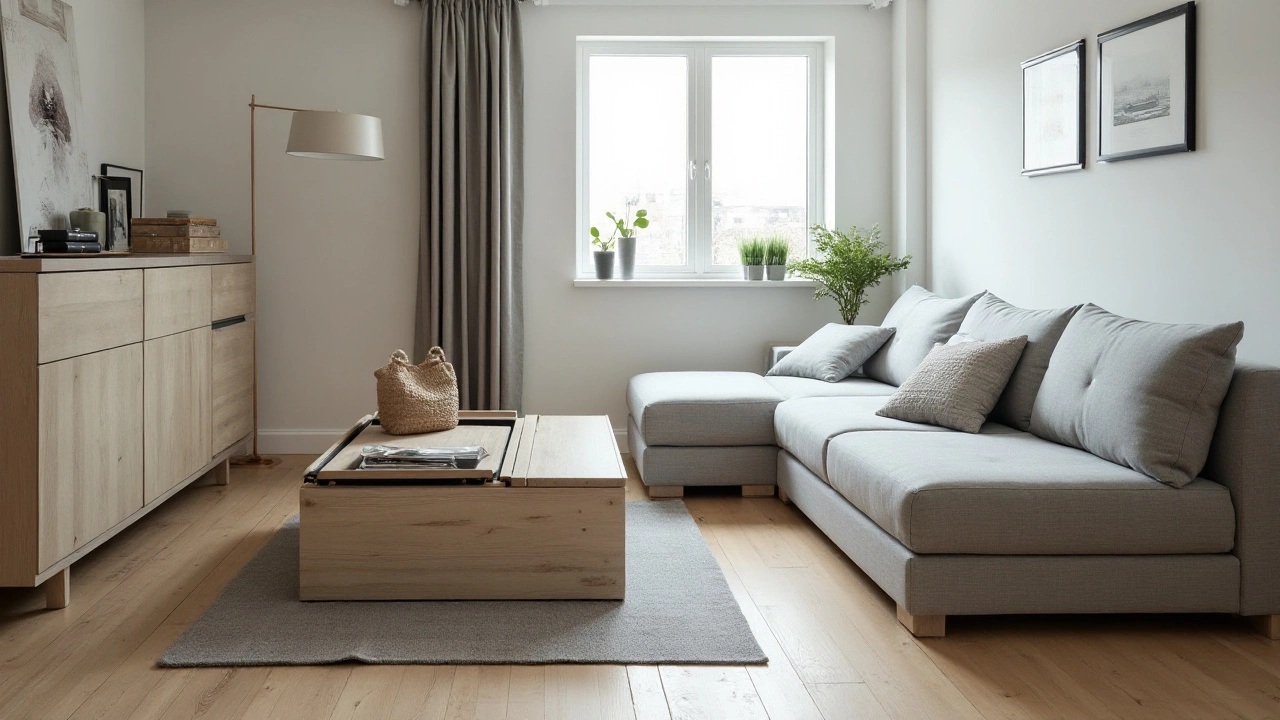
Multi-Functional Furniture
One of the most intriguing aspects of modern home design is the rise of multi-functional furniture. This trend has been driven by the increasing need for innovative storage solutions in small spaces. Imagine living in a studio apartment where every inch counts. It's essential to make sure every piece of furniture not only serves its primary purpose but also offers additional utility.
Think about a coffee table with built-in storage, perfect for stowing away magazines, remotes, or even board games. This type of furniture transforms a living room from cluttered chaos to an organized retreat without sacrificing style. In fact, design has come a long way, often incorporating sleek lines and smart materials to ensure that these pieces blend seamlessly into any decor.
Then there’s the magic of a fold-out desk—a lifesaver for those working from home. Once the workday is over, it easily folds back into a cabinet or wall, freeing up valuable space for other activities. According to recent studies, incorporating such flexible design elements can enhance productivity and reduce stress in compact environments. The ability to switch between roles with minimal fuss allows both your mind and space to feel uncluttered and efficient.
"Space is at a premium, and multi-functional furniture isn't just a solution—it's a revelation," says interior designer Emily Henderson, known for her practical yet stunning design solutions.
Moreover, the bed is another key player in this arena. Whether it contains drawers underneath or functions as a murphy bed, these clever designs ensure that what can be stored away is hidden from view. Some brands have even innovated to include shelving systems built into the headboard, offering more opportunities to maximize every corner of your space. This transformation of traditional furniture positions it as not just mundane, but as a smart investment for maintaining an organized home.
Let’s not forget the allure of modular furniture sets. These enable you to reconfigure and adapt as your needs change over time. A classic example is a sofa that converts into a bed while boasting hidden compartments for storing bedding or other items. This adaptability ensures that no matter how your lifestyle shifts, you're prepared with the right furnishings that offer both comfort and practicality.
Design Meets Functionality
When choosing multi-functional furniture, consider not only your current needs but future possibilities. Will this piece adapt if you move to a larger or even smaller place? The beauty of such furniture lies in its design ethos: sustainability not just through materials but through life stages. With the rapid pace of urban living, the assurance that your furniture can evolve with you offers unparalleled peace of mind.
| Furniture Type | Primary Function | Additional Functionality |
|---|---|---|
| Convertible Sofa | Seating | Bed, storage compartments |
| Lift-Top Coffee Table | Table | Hidden storage, work surface |
| Fold-Out Desk | Workspace | Concealed cabinet |
Conclusively, the era of storage solutions that don't compromise on style is truly upon us. Whether you're working, resting, or playing, ensuring that your small space has the right multi-functional furniture can turn limitations into opportunities. By thoughtfully selecting pieces that cater to your lifestyle, you open the door to a world where space constraints no longer dictate your quality of life.
Creative Closet Solutions
When it comes to small space storage, closets often become the crammed corners where we shove everything we can't seem to find a place for. But turning your closet into a model of organization can be a reality with some clever ideas and a bit of elbow grease. The first step is to rethink the space you have. Closets aren't just for hanging clothes, they can become multipurpose storage havens. Start with utilizing adjustable shelving systems that allow you to customize space according to your needs. By doing so, you can transform even the tiniest closet into a spot for seasonal clothes, shoes, or even personal items like scarves and bags. This adaptable system will enable you to change things around as your storage needs evolve, making it a lasting solution.
Adding hooks and rods underneath existing shelves can double your hanging capacity without taking up additional space. This technique is perfect for organizing belts, ties, and even jewelry. Make use of vertical space by installing double rods for short items of clothing like shirts and folded pants on hangers. Mesh bins and baskets are wonderful for corralling smaller items that can easily get lost at the back of the closet. Consider labels for quick identification, so you don't forget what you tucked away on that top shelf. Keeping a closet tidy is half the battle, after all. A little tip is to align all your hangers with openings facing the same direction. This not only presents a neat uniform look but also helps prevent snags when grabbing items in a hurry. Vacuum storage bags are a lifesaver for seasonal clothing, compressing bulky winter sweaters and coats to a fraction of their size.
Partitioning your closet into dedicated zones can enhance the overall organization. Creating a ‘shoe zone’ at the bottom with slim, pull-out shoe racks is a popular choice. Use the back of the closet door too, attaching clear shoe holders to keep items visible and organized.
Marie Kondo, the famous tidying expert, says, "The best way to find out what we really need is to get rid of what we don’t." Her advice is applicable; discard items that no longer bring you joy or purpose before reorganizing.Shelf dividers work wonders on higher shelves to keep stacks of sweaters or jeans from toppling over. Having a garment bag or two for rarely worn special occasion garments not only protects them but also frees up space for everyday clothes. Getting creative with closet solutions is about maximizing and optimizing every available inch, ensuring that your space works harder for you—one organized hanger at a time.
Consider some quick wins such as utilizing small baskets or drawer organizers for socks and undergarments, or even rolling smaller articles of clothing to save space. For the DIY enthusiasts, a pegboard mounted on a wall in or near your closet can hold baskets and hooks for ultimate customizable storage. Even in a rented space, these boards offer flexibility without making permanent changes. A sweet solution for renters is removable wallpaper or contact paper to line shelves for a fresh look with easy cleanup. Lastly, lighting is essential—LED motion sensor lights allow you to see everything in your closet with ease and are energy efficient, too.
Clutter can be overwhelming, but by breaking down the task into manageable steps and using these creative solutions, you can transform your closet into a functional space that doesn’t just store your clothes, but also brings a sense of calm and order to your daily routine. With these approaches, your closet can go from chaos to a perfectly organized space you not only need but will also love. So, what are you waiting for? Start making those small changes that will lead to big improvements in your home’s storage capacity.
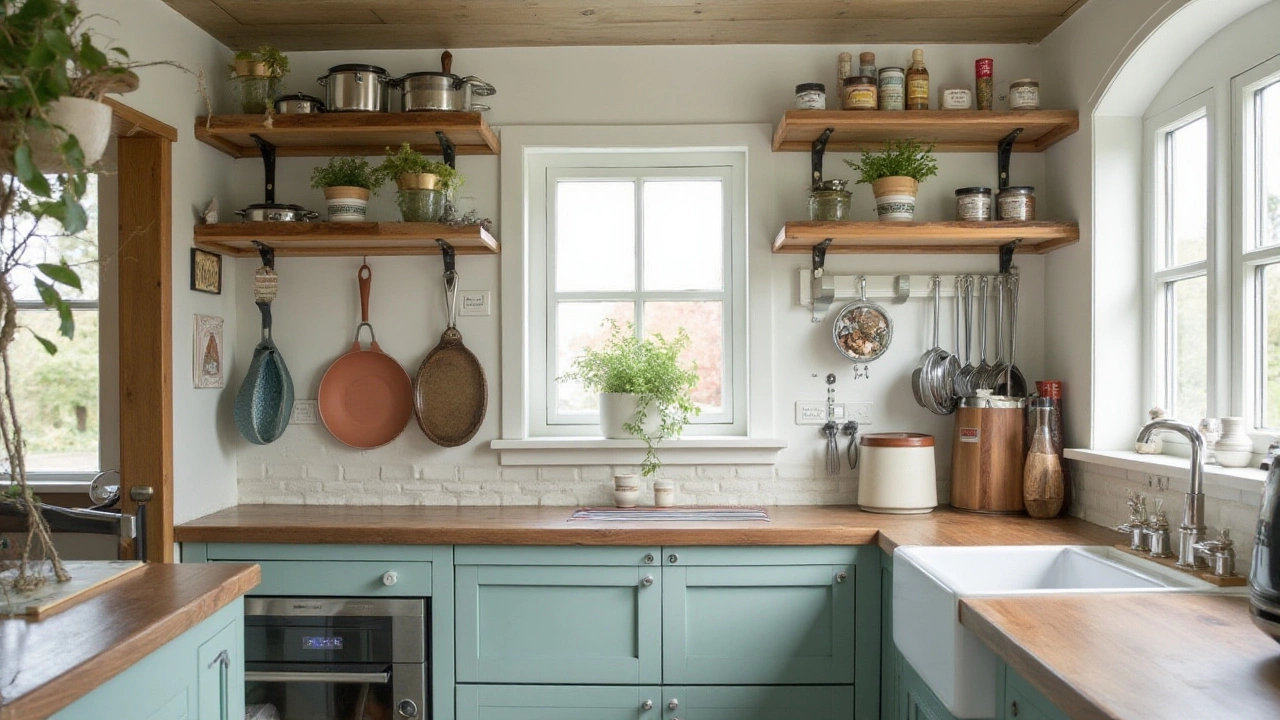
Under-Bed Storage Options
In tight living spaces, every inch counts, and the area beneath your bed offers a surprising amount of potential. This often-overlooked space can be a treasure trove for storage, especially for items you don't need every day. Imagine sliding out a drawer to reveal off-season clothes, spare bedding, or even a collection of shoes neatly organized. Transforming this hidden nook beneath the bed can make a huge difference, especially if you're aiming to declutter and free up room elsewhere. Companies like IKEA have understood this need, offering dedicated under-bed storage rollders and boxes designed to fit perfectly.
To make the most of small space storage, consider the height of your bed. If it's relatively low, risers can elevate it, allowing you to expand storage possibilities. There are a variety of choices on the market, from sleek rolling containers to storage bags that zip closed, protecting contents from dust. Be sure to check the dimensions before purchasing; you’ll want to ensure a snug fit. You might also consider DIY solutions like repurposing crates or baskets with wheels for a budget-friendly project. In an article by HGTV, they highlight the efficiency of this space, stating, "Using under-bed storage wisely can cut clutter in half, especially in rooms lacking closets."
Security is also important when considering these hidden storage gems. If the items are valuable or sensitive, consider lockable bins or cases, adding a layer of protection. Bins or bags made from breathable materials can prevent musty odors, which is something to keep in mind for storing fabrics. Another idea is to use vacuum-seal bags, which can vastly reduce the volume of bulky items like winter coats or duvets. It’s fascinating how your storage solutions can become varied and inventive with just a bed frame and a little creativity.
Not everyone has the same storage needs, and sometimes it can be helpful to break it down visually. Below is a simple table that outlines a few types of under-bed storage and what they're best suited for:
| Type of Storage | Best For |
|---|---|
| Roller Bins | Heavy items like books or equipment |
| Storage Bags | Clothing and soft items |
| Lockable Cases | Valuable or sensitive items |
Engaging in meaningful discussions with friends or fellow small-space dwellers can often yield creative ideas. After all, necessity is the mother of invention. If you spend a bit of time planning and setting up your under-bed storage, you’ll be amazed at how much clearer and more organized your living space can feel. Embrace the untapped real estate under your bed, and watch as your surroundings begin to breathe again with newfound space and tidiness.
Decluttering and Organizing Tips
Decluttering your home is much like sculpting a masterpiece; you remove the excess to reveal the beauty underneath. The first step is acceptance, admitting that beloved items are no longer needed. This might be challenging—sentimental attachment can be strong—but freeing up space paves the way for a more breathable and organized environment. Tackle decluttering by focusing on one area at a time, whether it’s a kitchen drawer stuffed with utensils or a closet bursting with clothes. By breaking it down movement by movement, it feels less overwhelming, almost approachable, like taking small bites of a larger feast.
Have you ever considered the emotional impact of clutter? Studies show a clear link between an organized space and reduced stress levels. It’s remarkable how the simple act of decluttering can be a balm for an overwhelmed mind. Not to mention, when every item has a place, time spent searching for mislaid keys or that specific scarf is significantly reduced, leaving more time to spend on activities that contribute to one’s happiness and productivity.
Now, it’s time to sort through items, deciding what to keep, donate, or discard. Apply the "one-in, one-out" rule—whenever a new item enters the home, ensure an old one departs. This keeps accumulation in check and helps maintain order. If indecision looms, ask yourself, "Does this item make my life easier or happier?" If not, it’s likely safe to let it go. Create a routine for clutter-busting; maybe it’s the first Saturday of every month, a chance to reset and reassess what fills your space. Consistency becomes your greatest ally in maintaining a clutter-free home.
Storage containers are your secret weapon. From stylish baskets to under-the-bed boxes, they help corral items that might otherwise end up strewn across surfaces. Labeling these containers adds an extra layer of organization and ensures you know exactly what belongs where. It might seem like an extra step, but the clarity it provides is worth it. You can also make it a fun project, involving family members in the process, easing the burden.
Completing the decluttering process isn’t the finish line; it’s the beginning of a new cycle. Relish the newfound space and consider how you can keep it sacred. As you progress, don't shy away from sharing your success stories. As Marie Kondo famously suggests, “The question of what you want to own is actually the question of how you want to live your life.” It's more than just cleaning; it's crafting the lifestyle you desire.
Your home is living space, not storage space. – François Léotard


